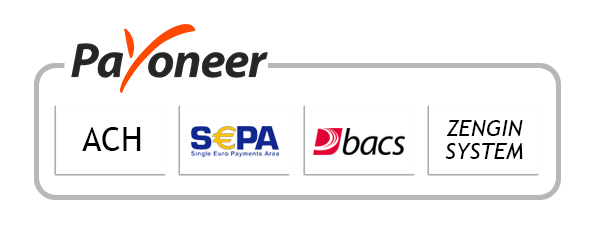Introduction
The semiconductor industry plays a crucial role in driving technological advancements across various sectors. It encompasses the production and distribution of semiconductor devices used in electronic devices, ranging from smartphones and computers to automotive systems and medical equipment.
According to Market.us, The Global Semiconductor Market is projected to reach a valuation of USD 1,307.7 Bn by 2032 at a CAGR of 8.8%, from USD 625.2 Bn in 2023. The semiconductor market is experiencing significant growth due to several key factors. Firstly, the increasing demand for connected devices and the Internet of Things (IoT) drives the need for advanced semiconductors capable of powering these devices and facilitating seamless connectivity.
![]()
Additionally, the expansion of artificial intelligence (AI), machine learning (ML), and data analytics applications fuels the demand for high-performance semiconductors capable of processing and analyzing vast amounts of data. Furthermore, the growth of cloud computing, data centers, and 5G networks requires advanced semiconductor technology to support faster data transfer speeds and improved network performance.
Top 5 Trends
Here are the top 5 trends highlighting the growing preference for semiconductors:
- Increased demand for connected devices: With the rise of the Internet of Things (IoT) and smart devices, there is a growing need for semiconductors that power these interconnected technologies. Smartphones, wearables, home automation systems, and other IoT devices rely heavily on semiconductors to enable their functionality.
- Advancements in autonomous vehicles: The automotive industry is rapidly adopting semiconductor technology to develop autonomous vehicles. Semiconductors are essential for the complex systems that enable autonomous driving, including sensors, processors, and communication modules. The demand for semiconductors in the automotive sector is expected to continue growing.
- Expansion of artificial intelligence (AI) and machine learning (ML): AI and ML technologies heavily rely on semiconductors to process massive amounts of data and perform complex computations. As AI and ML applications expand across industries like healthcare, finance, and manufacturing, the demand for high-performance semiconductors designed for these applications is on the rise.
- Growth in cloud computing and data centers: The increasing reliance on cloud-based services and the growth of data-intensive applications have led to a surge in demand for semiconductors in data centers. Processors, memory chips, and networking components are essential for data centers to handle large-scale data processing and storage requirements.
- Expansion of 5G networks: The deployment of 5G networks requires advanced semiconductor technology to support higher data transfer speeds and lower latency. Semiconductors play a crucial role in 5G infrastructure, including base stations, antennas, and network equipment. As 5G continues to roll out globally, the demand for semiconductors in this sector is expected to grow significantly.
Suggested Reading@ Chiplets Market Projections Point to USD 107 billion by 2033
Additionally, our analysts have identified the following as enablers of the Semiconductor market, between 2024-2033:
- Advancements in AI and Machine Learning: The continuing evolution and integration of AI and machine learning technologies are expected to remain central to the growth of the semiconductor market. These technologies not only require sophisticated chip designs but also drive the development of new semiconductor applications, from automotive to consumer electronics and beyond.
- Increased Demand for Electric Vehicles (EVs) and ADAS: As the automotive industry continues its shift towards electrification and autonomous driving, the demand for semiconductors in this sector is anticipated to surge. Advanced driver-assistance systems (ADAS) and other electronic components essential for EVs will necessitate a wide array of semiconductors, from power management chips to sensors and beyond.
- Expansion into New Consumer Electronics: The proliferation of smart devices and the Internet of Things (IoT) is set to broaden the market for semiconductors. With more devices becoming connected and smart, the need for semiconductors in consumer electronics will likely see a significant increase, driving market growth.
- Technological Innovations in Memory and Storage: The memory market, including NAND flash and DRAM, is poised for recovery and growth. Innovations in storage technology and the increasing demand for higher capacity and faster memory solutions for both consumer and industrial applications will play a critical role in the semiconductor market’s expansion.
- Advances in Semiconductor Manufacturing Processes: The industry’s push towards smaller, more efficient, and more powerful chip designs will necessitate advancements in semiconductor manufacturing processes. The development of next-generation lithography and packaging technologies will enable the production of chips that are not only more powerful but also more energy-efficient.
- Government Policies and Investments: Support from governments around the world, through investment in research and development and policies conducive to semiconductor manufacturing and trade, will be crucial. Such support can help mitigate some of the geopolitical and supply chain challenges facing the industry, fostering a more stable and conducive environment for growth.
- Sustainability and Energy Efficiency: As the global focus on sustainability intensifies, the semiconductor industry will likely see a push towards more energy-efficient designs and manufacturing processes. This shift is not only in response to regulatory pressures but also to market demand for greener and more sustainable technology solutions.
Major Challenges:
Despite its growth prospects, the semiconductor industry faces several challenges. One major challenge is the increasing complexity and cost involved in developing advanced semiconductor technologies. Shrinking transistor sizes, known as Moore’s Law, are becoming more challenging to achieve, requiring significant investments in research and development. Additionally, the industry faces supply chain disruptions, such as global semiconductor shortages, which can impact production and lead to increased costs. Furthermore, the need for stringent quality control and reliability standards poses challenges in ensuring consistent product performance and minimizing defects.
Opportunities:
The semiconductor industry presents numerous opportunities for innovation and market expansion. The increasing demand for energy-efficient semiconductors opens avenues for developing power-saving technologies to meet environmental sustainability goals. Moreover, emerging technologies such as autonomous vehicles, augmented reality, and virtual reality offer opportunities for semiconductor companies to develop specialized chips and systems tailored for these applications. Additionally, the growing demand for semiconductor components in emerging markets presents a vast untapped customer base, providing opportunities for market expansion and revenue growth.



